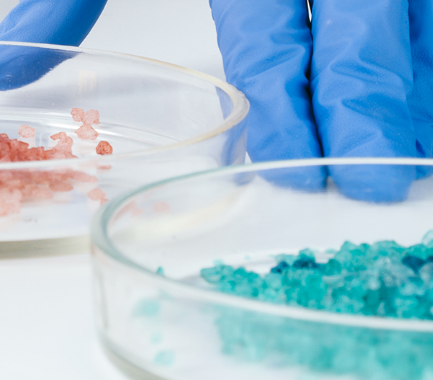Your contact
PENPET-Team - Hamburg

Christoph Meister
Sales
Tel. +49 (0) 40 - 675 7 99 30
sales@penpet.de
Get in touch with us.
Butyldiglycol Acetate (BDGA)
Butyldiglycol acetate (BDGA) is an organic compound that belongs to the carboxylic acid esters and is important for various industrial applications. To produce the substance, acetic acid or acetic anhydride is esterified with diethylene glycol monobutyl ether.
The compound serves as a plasticizer for paints, varnishes and coatings. In addition, butyldiglycol acetate is used in industry as a solvent for cellulose nitrate, polymeric coatings, waxes, resins, rubber, and oils. The substance is also used as a cleaning agent.
At PENPET, you can get butyldiglycol acetate (BDGA) of the highest quality, from a reliable partner who will also meet your requirements in the long term. We look forward to receiving your inquiry for an individual offer. Timely delivery of the liquid can be in bulk in road tankers or containers, as well as in IBC packs and drums of various weights.
CAS no. 124-17-4
EINECS no. 204-685-9
Molecular formula: C10H20O4
Synonyms: BDGA, Diethylene glycol monobutyl ether acetate, Diethylene glycol monobutyl ether acetate, Diethylene glycol butyl ether acetate, DEGBEA, Butyl dioxitol acetate, Butyldiglycol acetate, Butyl carbitol acetate, 2-(2-Butoxyethoxy)ethyl acetate, 2-(2-Butoxyethoxy)ethyl acetate, Butheth-2 acetate
Areas of application: Used as a softener, solvent and cleaning agent
More Information
Butyl diglycol acetate (BDGA) is a long-chain organic compound made up of several components. It represents the ester of acetic acid with the substance diethylene glycol monobutyl ether. This alcoholic compound is already a double ether made up of one part butanol and two parts ethylene glycol. Butyldiglycol acetate, which is accordingly also referred to as diethylene glycol monobutyl ether acetate, has two ether groups and one ester group.
These three functional groups determine the reaction behavior of the compound. Hydrolysis and reduction reactions involving the substance are therefore to be regarded as typical reactions. The functional groups also explain the good solubility of butyl diglycol acetate and its suitability as a solvent.
Under normal conditions, butyl diglycol acetate (BDGA) exists as a liquid. The colorless to yellowish substance has a fruity, ester-like odor and a bitter taste. The compound is hardly volatile, very temperature-resistant and only changes to the gaseous state at 246 °C. The melting temperature below which butyl diglycol acetate solidifies is -32 °C. The substance is readily soluble in water and miscible in any ratio with many organic solvents such as acetone, ethanol and diethyl ether.
Butyldiglycol Acetate (BDGA) is chemically stable when stored as directed. However, the compound is sensitive to light and reacts with air. Explosive peroxides can form in the process. Butyl diglycol acetate can also react dangerously with aluminum and alkaline substances.
The compound is flammable, but is difficult to ignite. Explosive mixtures of vapors of the substance with the ambient air can form in the event of strong heating. When processing butyldiglycol acetate, it is therefore important to ensure that there is sufficient distance to possible sources of ignition such as open flames, mechanically generated sparks, hot surfaces or electrical discharges. Burning of the substance produces irritating and toxic gases. Among other things, considerable amounts of carbon monoxide that are dangerous to health can be released.
According to the GHS classification, butyldiglycol acetate (BDGA) is not a hazardous substance. However, in the case of prolonged or repeated contact with the compound, irritation of the skin and eyes cannot be ruled out. Affected parts of the body should be cleaned thoroughly with soap and water. Rinse the eye with running water.
Inhalation of aerosols and vapors of the substance can lead to irritation of the respiratory tract and mucous membranes. Gastrointestinal symptoms may occur after ingestion of butyldiglycol acetate. If significant amounts of the substance are absorbed, effects on the central nervous system and impairment of liver and kidney function are possible. Therefore, in case of exposure, medical attention should be sought.
Butyldiglycol acetate is considered to be slightly hazardous to water. The substance must not be allowed to enter water bodies, soil or waste water. Leaks of large amounts of the compound into the environment should be reported to local authorities. Butyldiglycol acetate is not subject to any special transport regulations.
